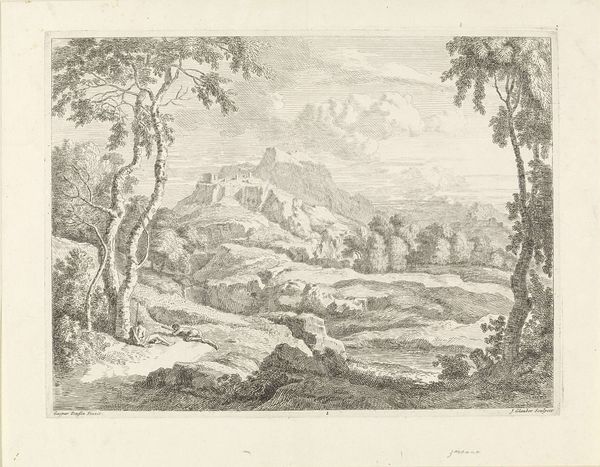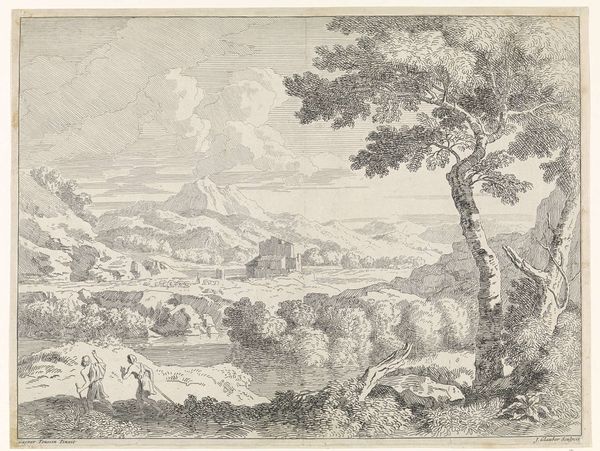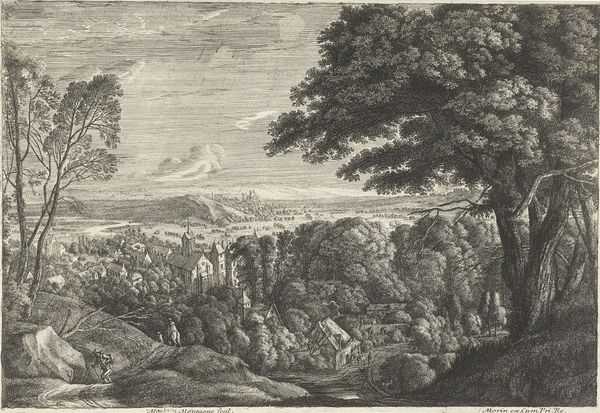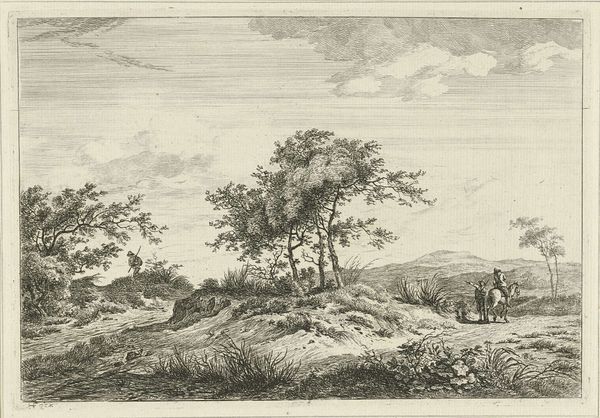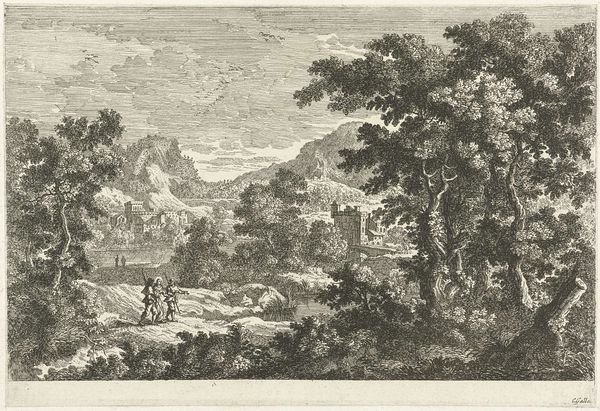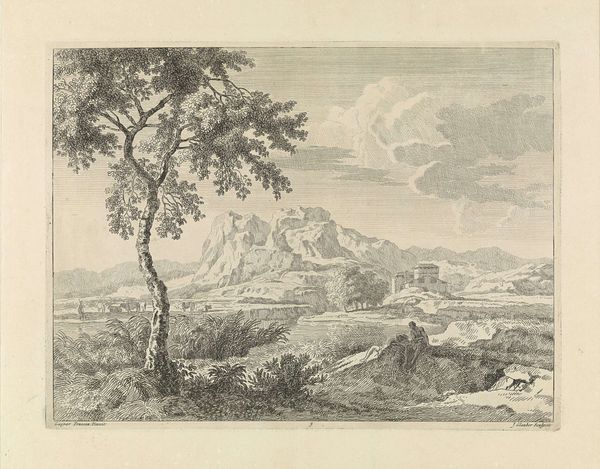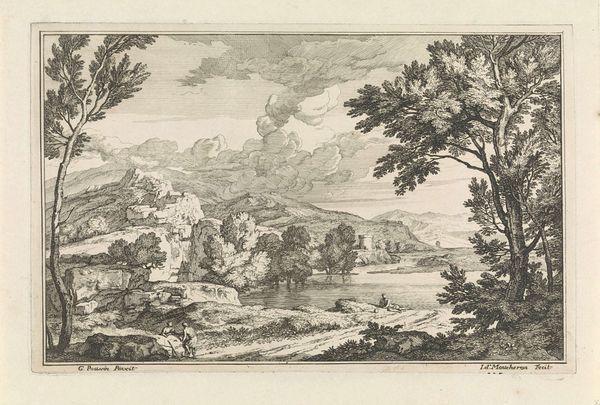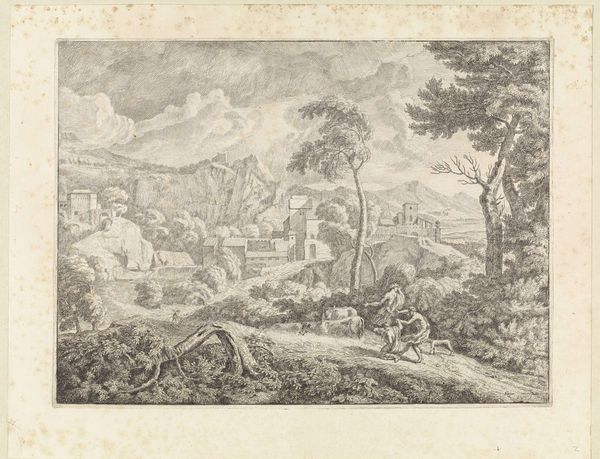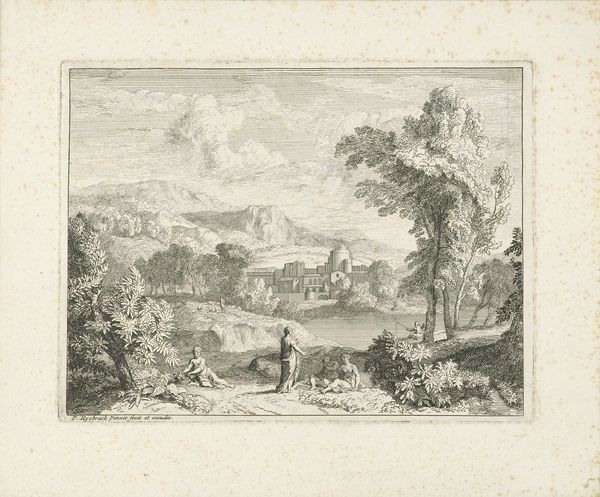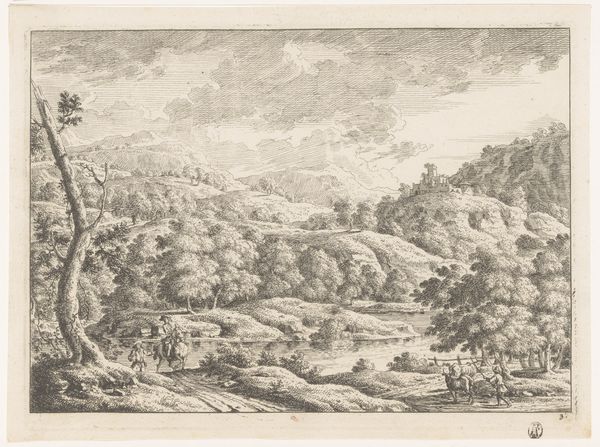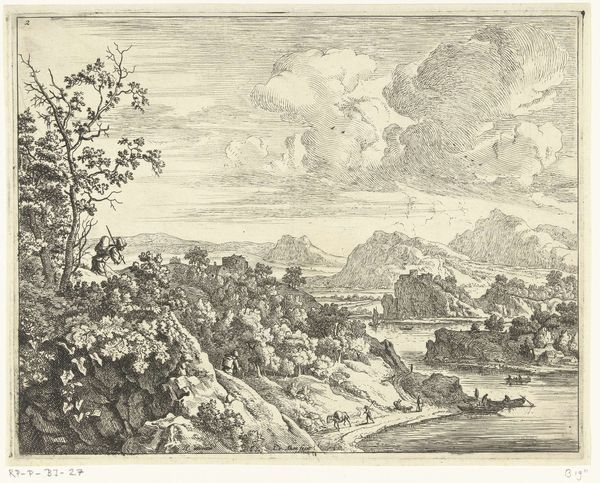
print, engraving
#
baroque
# print
#
landscape
#
engraving
Dimensions: height 294 mm, width 391 mm
Copyright: Rijks Museum: Open Domain
Curator: The artwork we're looking at is titled "Heuvelachtig landschap met herders" or "Hilly Landscape with Shepherds" by Johannes Glauber. It's an engraving that was created sometime between 1656 and 1726. Editor: My first impression is one of tranquility. The fine lines create a sense of gentle movement, from the flowing river to the softly rendered foliage. There's a compositional balance between the light and shadow that draws you in. Curator: Absolutely. And I think understanding Glauber’s position within a historical context illuminates this sense of idyllic escape. Consider the immense socio-political shifts happening across Europe at the time, particularly concerning land ownership and agrarian life. Editor: How so? Is it about an imagined life removed from industrialization? Curator: In part. Glauber, among others, offered an imagined counterpoint to urbanization and perhaps to a kind of enclosure, so often rendered visible in landscape paintings. The very act of engraving, the multiplication of the image, hints at broader access and potentially wider distribution of an alternative narrative. This visual narrative imagines a communal interaction with the natural landscape, and perhaps a resistance to hierarchical structures of labor and property. Editor: The distribution of light is definitely important here. Notice how it focuses your eye toward the center, the small structure with arches. Curator: The presence of architecture is a complex inclusion because that speaks to themes of settlement and cultivation, even power. I read it as integrated within the organic forms of nature rather than opposing it, which contributes to the utopian aspect of the scene. And that, even then, we are talking about how to engage with ideas of utopia through our engagement with a long history of colonial activity, gendered oppression, racial capitalism, and environmental damage. Editor: I agree that the balance contributes to the utopian, arcadian mood, but on the other hand, I'm also wondering whether it may contribute to a subtle power dynamic, placing the viewer as some kind of distant but knowing overseer of the scene. It almost makes you feel outside the frame and thus strangely complicit. Curator: Interesting point. These observations demonstrate the multilayered nuances and complexities of interpreting art that exists as both a product of and a commentator on the times. Editor: Right, precisely. Looking closely at Glauber's handling of line and shade, the structural underpinnings that support the piece reveal deeper truths. It pushes me to acknowledge that what begins as simply peaceful expands out to the difficult intersections we negotiate in landscape depictions today.
Comments
No comments
Be the first to comment and join the conversation on the ultimate creative platform.

